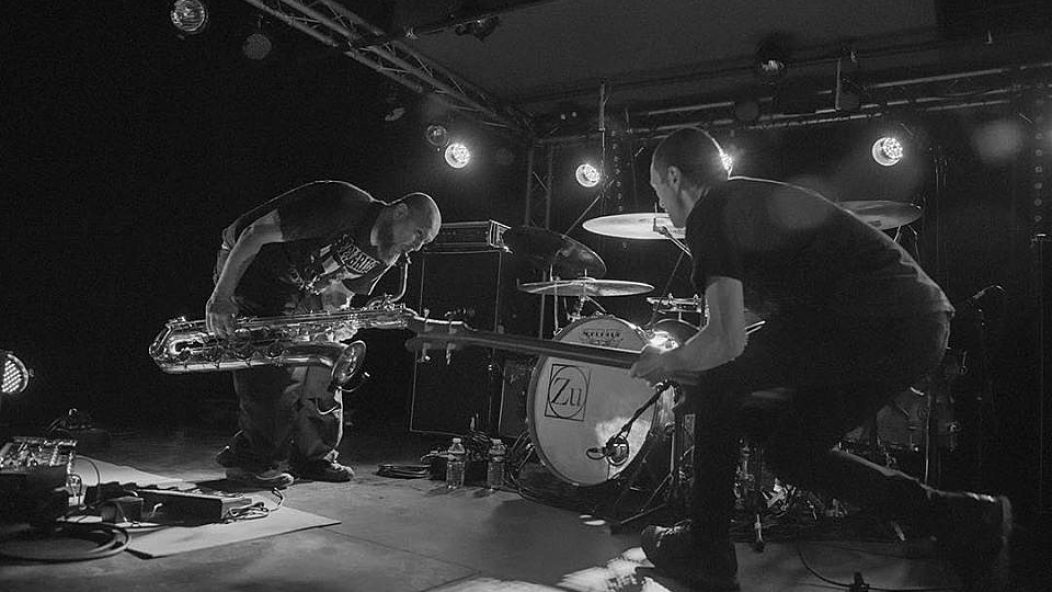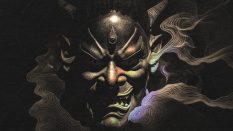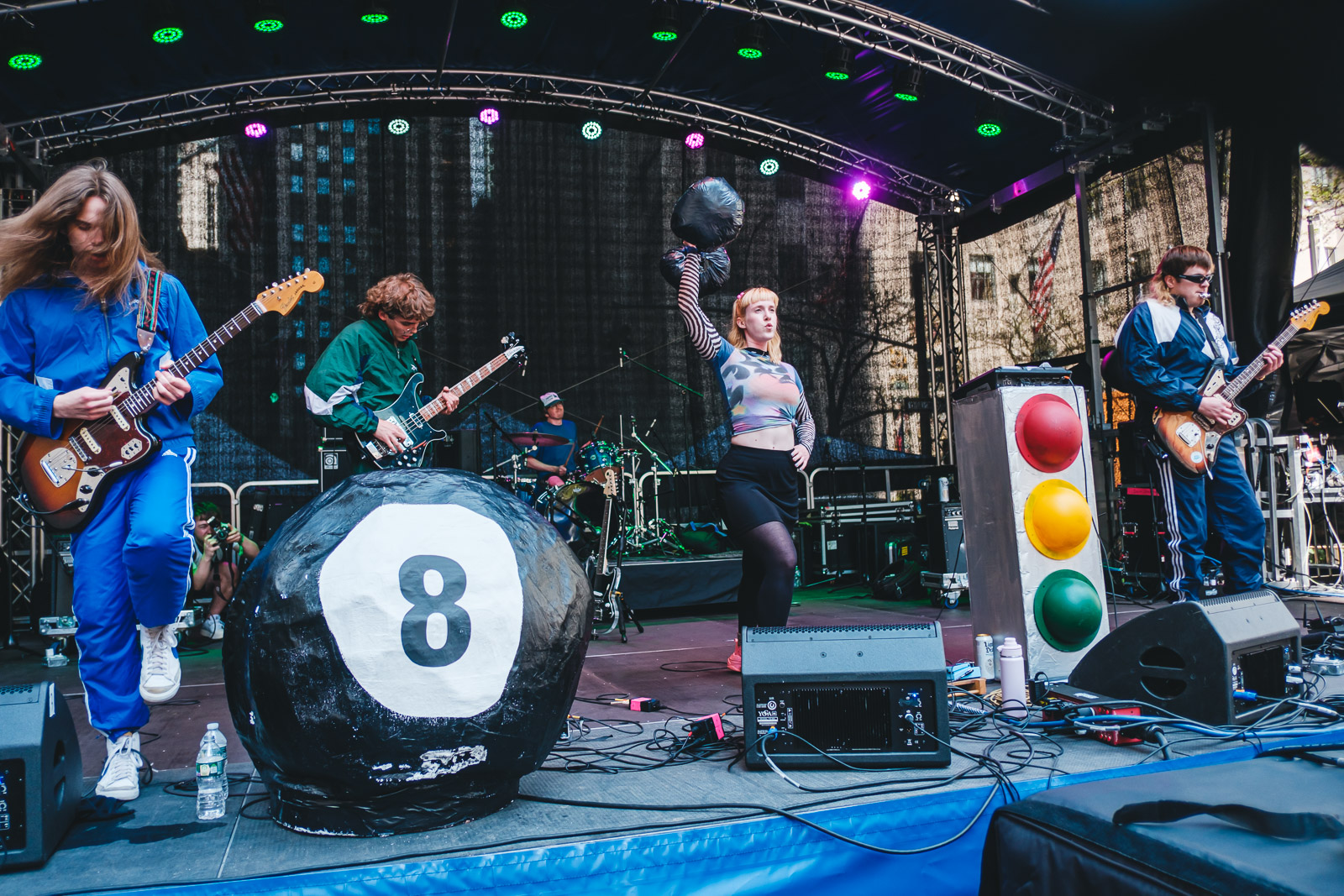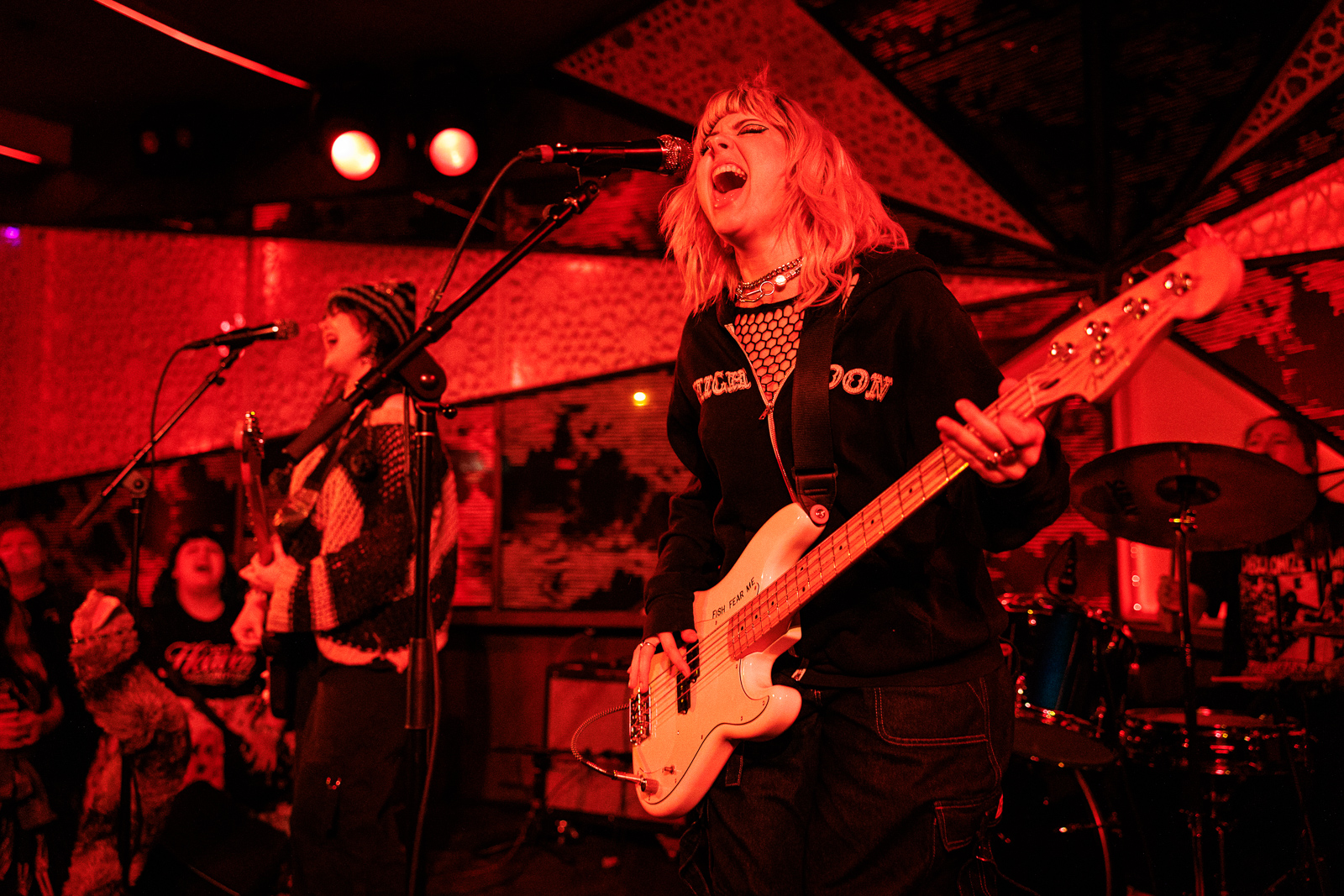
Interview: Massimo Pupillo (Zu)
…
Like true innovators, Italian experimental music shamans Zu are dedicated to true to themselves. This is how they moved from the heavy jazz/sludge mayhem of their previous record, Cortar Todo, to abstract jazz territory of Jhator. Progress is just a consequence of exploration, bassist Massimo Pupillo suggested when we spoke to him via e-mail. Pupillo also shared his take on the history and sound of the Zu, the spiritual influences of the new album, Jhator, the power of artistic continuity, collaborations and the alchemical properties of composition and improvisation.
…
…
For anyone out there that does not know who Zu is, can you give a brief history of the band?
It’s 20 years since we formed, we met as early teenagers. It’s a long story. We formed after having been part of other bands and projects, and we got together as a trio to work on a music score for a theatre play, where we discovered we didn’t need a guitarist or a vocalist to say what we wanted to say. Our unusual line-up freed us from any sense of belonging to a fixed genre and so we explored a lot of different scenarios and possibilities while developing more and more a personal sound and approach to music, I hope. We released a lot of music throughout the years, I lost count but it must be more than 15 full length albums with Zu, let alone the myriad of side projects. And we’ve played more than 2000 gigs for sure, in fact we stopped counting when we reached that number. We took a long break in 2011 after wearing ourselves out with too much touring… we reformed with our new drummer Tomas Jarmyr from Trondheim, Norway.
You are a band that constantly innovates and does not retain a specific style from one album to the other. What is the reason for performing these morphings? Is it a process that you find tiresome or one that rejuvenates you?
I think music or art in general if it’s born in a place of deep instinct, honesty and sincerity, will mirror one person’s sense of life and her or his path, and when you play and write music for many years as we did, personal lives changes along the way, minds and spirits change, in a way that is only normal that music mirrors, so it evolves along, following one’s path. We never aim for change or morphing for the sake of it, in fact we hardly aim for anything else than exploring life in all its beauty and sadness and complexity and expressing in music what we find out. This is not a career for us. It’s our life. It would be much more tiring to stick to a formula for marketing reasons and for commercial success. There are some factors which stay the same through the years. I think our music has always been very dense, heav, and deeply uncompromising.
I am really curious to hear what is the song crafting process for you guys, and if it has changed through the years? Do you improvise completely all your music or is it a more structured approach than you let on?
In the first years we used to improvised a lot, and I feel it was part of letting loose and trying not to have a fixed approach on the result. Also it’s been a way to not try to sound like anyone else but see what would come out spontaneously when you have these three people in a room. It was a way to free the music. But it’s been at least ten years now that we write in a very rigorous way, not on paper but in a studio or in a room, or in our minds. I believe in some kind of alchemy between people, it’s something that has a lot to do with love. Also because it’s always highly volatile and unpredictable.
Has the recording process changed for you over the years? Do you approach the studio as an improvised session over some basic concepts? I am particularly interested to know how you approach the use of effects, especially in “The Dawning Moon of the Mind.” Are they recorded live as you are playing or added afterwards?
We learned in time that the studio can be an instrument in itself. I suffer from a sort of Luddite block and am always wary of technology, so it took me years to finally appreciate what one can do with a computer […] before we were much more on the Steve Albini side of things, using the studio solely to catch a live performance. But this changed little by little. On Jhator we worked in many different studios, there was a lot of editing, processing and post production done with our sound engineer Lorenzo Stecconi. For “The Dawning Moon of the Mind.” we worked separately on each layer of sound, some recorded in different places and times, but with a clear picture in mind, in a sort of movie – editing, having different scenes shot separately, but with a clear sense of the story always in mind. The koto was processed in a meticulous and painstaking way, every note a bit differently, because we wanted to slowly bring that beautiful, natural and organic sound in a sort of alien environment.
We used a lot of granular synthesis on the whole album, but also some very esoteric sound processors and even some DJ equipment.
Jhator focuses on a couple of spiritual concepts. The first is the ceremony of sky burial, something you had already visited in Cortar Todo. Can you tell us what is it that attracted you in that concept, and what was it that you felt was left unexplored after the previous track?
“A Sky Burial” appeared for the first time even before, in an album we did some years ago with Eugene S. Robinson, The Left Hand Path. Personally I‘ve always been a fan of recurring themes I love that in other people’s work. It’s like some ideas can generate many different directions and outcomes, and the “A Sky Burial” basic bass riff felt still rich of potential to us. Like we could use it as a bridge into unknown territories, where we could use more traditional instruments, like Hurdy Gurdy, Koto, strings and Tuba, on one side, and lots of electronics on the other side. The way we play our instruments live for years now, is very similar, they are heavily processed so that the outcome is a hybrid between organic and electronics.
…
…
The other element in the new record comes from ancient Egyptian text and Susan Brind Morrow’s book “The Dawning Moon of the Mind”, which the second track is named after. Both tracks deal with influences outside of the Western tradition. What is the allure of the Eastern and ancient Egyptian cultures?
For some reasons, both me and Luca studied and explored different cultures since we were quite young. Not only eastern traditions, but also forgotten and repressed/forbidden Western ways, like hermeticism, alchemy, John Dee magic and so on. It’s very important for me personally to remember that our standard way of modern western thinking has become very limited and progressively more and more narrow minded. Also it’s not about leaving our normal mindset behind to try and become someone or something else, more “exotic,” but embracing other perspectives, realising that these different points of view can be integrated and do not exclude each other.
Do you find it difficult to address such subjects without the use of a vocalist? Or do you think that spiritual ideas can be addressed in a universal level, where language is not necessary?
Sound has such an enormous potential and richness in information. A few years ago we performed live with a great experimental theatre company called Societas Raffaello Sanzio and director Romeo Castellucci told me he used to listen to our music while imagining scenes for his works, because he found that our music had a strong dramaturgic sense. In the beginning I didn’t quite understand what he was saying but thinking about it, my vision of our music opened up and I started to see there were stories we were actually already saying. And we started to work more deliberately with these stories, and with visions, and I think our music became so much more accurate and rich since then.
The new album is coming out from House of Mythology, which is a really cool boutique-type label. What was your working relationship through the production of this album, and what do you think separates them in today’s landscape?
I worked with House Of Mythology one year ago when we released the duo Laniakea with Ulver’s Daniel O’Sullivan, and I’ve been very very impressed with the love and care and attention they put into every single aspect of a release. Plus,I always loved labels who have a strong vision and a sense of aesthetic direction, like early 4AD or SST, just to name a couple. They asked us to listen to the very first sketches and sent us their warm feedback throughout the six months of work, and since no one is getting rich on selling records, at least there’s true love for music involved.
Jhator comes with some stunning artwork! Who did the art for the record, and how much guidance did you provide them with? Did you have a set idea in mind, or did you let the artist roam freely?
The artist is called Paschalis Zervas[http://paschaliszervas.com/], a very talented and dedicated art designer from Athens, Greece, which we had the good luck to meet while working on the release, as we played there. We collaborated, exchanging lots of ideas and visions. On our side, given the theme of the album we were strongly aware that we wouldn’t use any gloomy or sinister, literal images. Because – and here again there is some distance from the modern western point of view – the album is not about death, but about the mystery that surrounds us and in which we’re all immersed.
In the past you have collaborated with a number of great, diverse musicians, from Mats Gustafsson, to Dälek and Eugene Robinson. How do you approach each collaboration? Do you attempt to accommodate the sound of the artist you are working with, or is it a completely improvised, going with the flow process?
We always meet as humans first, and only when there is a sense of friendship and a shared vision, we feel space to collaborate with someone.
And exactly as in friendship, you don’t choose which subjects you will engage in conversations, each person you meet can mirror a different side of you and elicit different responses. We never calculated anything, this might also be a limit in a commercial sense, but in the long run it’s very healthy for us. We had a very strong and long collaboration with Mike Patton and it was one of the easiest ever, cause he’ s such a musical genius, he just jumped in and felt like he was one with the band. Sometimes it’ s been more difficult, for example with Dälek we needed to find a common ground halfway, and same with electronic japanese artist Nobukazu Takemura. It’s always interesting because you open new doors and explore new landscapes which can’t happen so easily if a band locks itself in a fixed identity because “this is how things should be done.”
…
…
Do you have any plans for future releases? Any more interesting collaborations?
We are going to spend a few days now on tour in Scandinavia in Årabrot’s studio, we shared some gigs with them, became friends and we had the idea of a collaborative album, let’s see how this goes! We just played live in Oslo inviting Stian Westerhus, that for me is one of the most interesting musicians around at the moment, and a House of Mythology label mate as well. In June we’ll start writing our next album too, let’s see how it goes!
How would you describe your live performances? Being influenced by free-jazz do you tend to reinterpret your music on stage, discovering new renditions?
The way we are influenced by free-jazz is much more ideal and political than musical, per se. And not more than we were influenced from hardcore punk for example. We approach music in a free and open way, but at the end of the day everything is rigorously written down. We tend to reinvent ourselves and our sound, but it’s not something we must do, it happens organically, just like a person changes over time.
…











